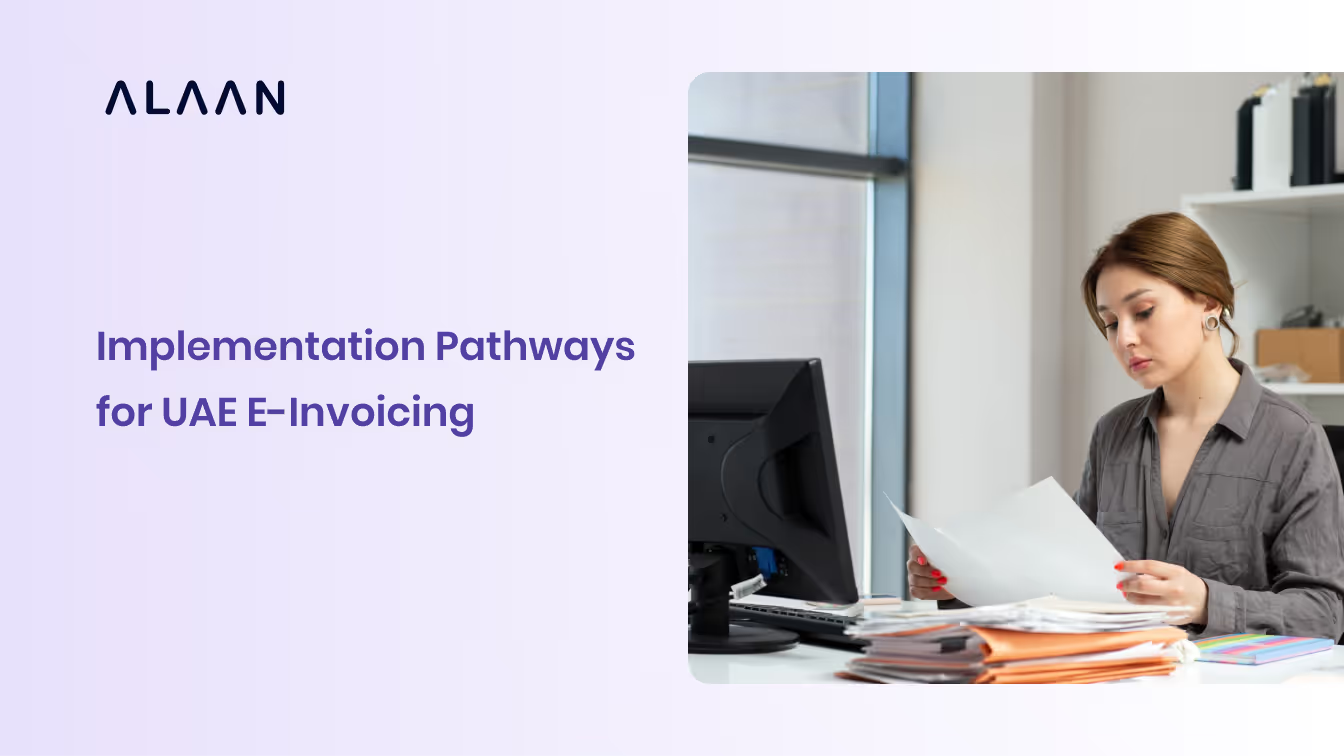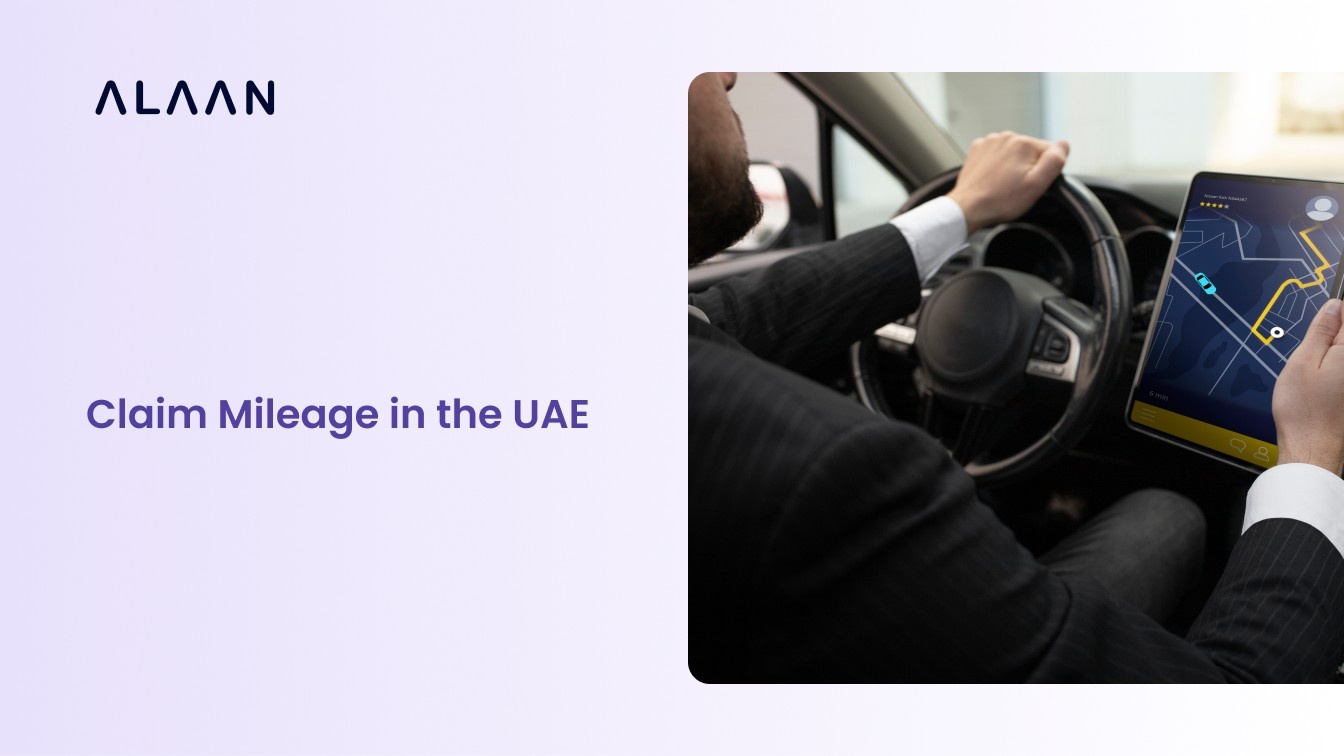With the July 2026 e-invoicing mandate approaching, UAE businesses must shift focus from understanding the rules to implementing them effectively. The Ministry of Finance (MoF) has set out the regulatory and technical framework, and now companies must adapt their invoicing systems, workflows, and teams to comply.
Implementation will not look the same for everyone. Small and medium-sized enterprises (SMEs) often need fast, affordable, and simple solutions without heavy IT support. Large enterprises, by contrast, must plan structured ERP integrations that can take up to a year to execute. This blog provides practical pathways for both SMEs and enterprises, along with vendor comparisons, ERP integration tips, and change management guidance.
SME Pathway: Quick Start Guide
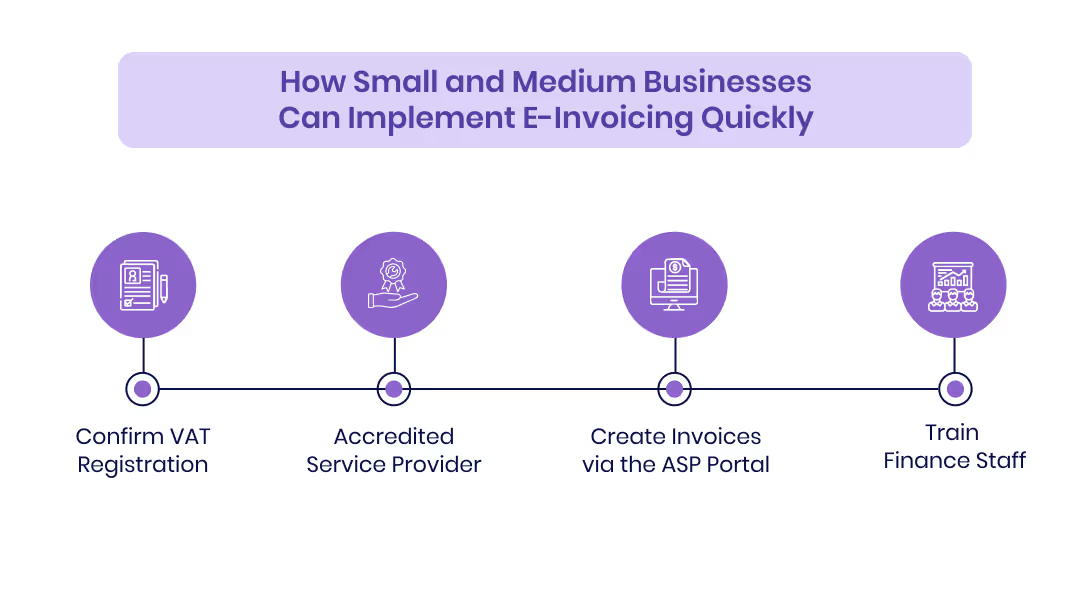
For SMEs, e-invoicing does not need to be a complex IT project. The focus should be on selecting the right accredited provider and adopting plug-and-play solutions that minimize disruption.
Step 1: Confirm VAT Registration
Only VAT-registered businesses fall under the e-invoicing mandate. Ensuring that your company’s Tax Registration Number (TRN) is active and accurate is the first step toward compliance.
Step 2: Choose an Accredited Service Provider (ASP)
SMEs should prioritize MoF-accredited ASPs that offer user-friendly platforms, such as cloud invoicing portals or accounting software add-ons. These providers will automatically handle XML conversion, validation, and transmission to the FTA. While as of August 2025, the final ASP register is still being finalized, global providers like Pagero and Thomson Reuters are preparing for accreditation.
Step 3: Upload or Create Invoices via the ASP Portal
Instead of building custom integrations, SMEs can generate invoices directly in the ASP platform. The provider ensures compliance with PINT AE XML format and handles secure transmission through the Peppol 5-corner model.
Step 4: Train Finance Staff to Monitor Status
SMEs should assign at least one finance staff member to track invoice acknowledgments, resolve any rejections, and maintain proper archiving. Most ASPs offer dashboards to simplify monitoring and reduce manual checks.
Pro Tip: Many ASPs will provide at least 100 free invoices per year to SMEs, making compliance affordable even for startups.
Enterprise Pathway: ERP Integration Project Plan
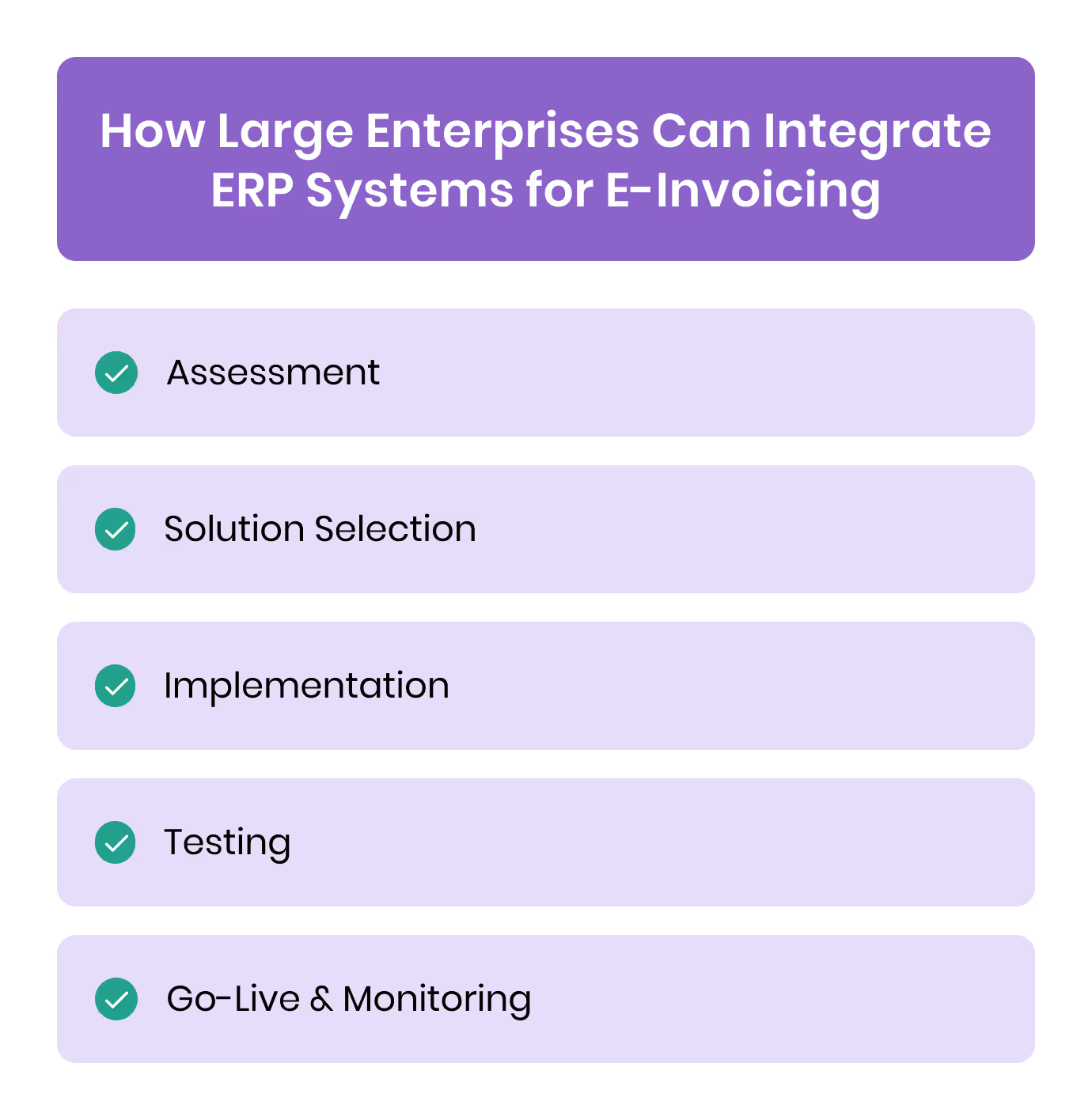
For large organizations, implementing e-invoicing is not a quick plug-and-play exercise. It is an IT and finance transformation project that requires months of planning, development, and testing. With the July 2026 deadline fixed, enterprises should begin their projects in 2025 to allow enough lead time.
Phase 1: Assessment
The first step is to review existing invoicing workflows and ERP configurations. Enterprises must ensure that:
- All mandatory PINT AE fields (such as TRNs, VAT breakdowns, and supply classifications) can be captured within ERP systems.
- Legacy processes, such as manual invoice generation, are identified for replacement.
- Special cases like credit notes, cancellations, or self-billing are mapped for digital handling (Cygnet UAE Guide).
Phase 2: Solution Selection
Most enterprises will work with an MoF-accredited ASP. Key evaluation factors include:
- Global Peppol experience (important for multinationals; e.g., Pagero, SAP Document Compliance, and Thomson Reuters ONESOURCE already operate in Peppol jurisdictions).
- ERP integration capability (availability of certified SAP/Oracle connectors).
- Support and training services to assist large finance teams.
Becoming an ASP internally is technically possible, but usually impractical due to accreditation costs and requirements.
Phase 3: Implementation
This is where technical integration takes place. Typical approaches include:
- Direct API Integration – connecting ERP systems directly to the ASP’s platform.
- On-Premise Connectors – middleware solutions that translate ERP invoices into PINT AE XML.
- Hybrid Cloud Models – where ERP pushes invoice data to cloud-based ASPs for validation and reporting.
Enterprises should ensure master data quality (customer TRNs, VAT codes, supply types) is accurate before integration begins.
Phase 4: Testing
A parallel run is recommended in 2025: generating e-invoices alongside traditional invoices to identify mapping errors, missing fields, or rejected transactions. Testing should include:
- Invoice creation and validation in PINT AE XML.
- Status acknowledgments from ASPs and the FTA.
- Exception handling (rejected invoices, credit notes).
Phase 5: Go-Live & Monitoring
By early 2026, enterprises should aim for a phased go-live, starting with one business unit or subsidiary before scaling company-wide. Continuous monitoring is essential to:
- Track status messages and rejections.
- Ensure retention policies (5+ years electronic archiving) are met.
- Measure compliance performance across finance teams.
Timeline Guidance: According to KPMG UAE, enterprises should allow 6–12 months for full implementation, meaning projects should kick off no later than Q4 2025).
Vendor & Software Comparison: Choosing the Right ASP
Selecting the right Accredited Service Provider (ASP) or e-invoicing software is one of the most important implementation decisions. While the UAE Ministry of Finance will publish the official list of accredited providers, many global and regional players are already preparing to serve the UAE market.
When evaluating options, businesses should consider:
- Accreditation status (MoF approval is mandatory for compliance).
- Experience with Peppol in other jurisdictions.
- ERP integration capabilities (SAP, Oracle, Microsoft Dynamics, etc.).
- Pricing model (subscription vs. per-invoice).
- Support and training services offered.
Below is a feature matrix based on providers currently active in the region or preparing for UAE accreditation:
Note: As of August 2025, no ASPs are officially accredited yet, but the accreditation process began in late 2024. Businesses should monitor the MoF accredited provider register regularly for updates.
ERP Integration Tips for SAP, Oracle, and Microsoft Dynamics
Once an ASP is selected, the next challenge is ensuring your ERP or accounting system can communicate seamlessly with the ASP platform. The key is making sure invoice data flows smoothly, in the correct PINT AE XML format, without requiring excessive manual intervention.
1. SAP: Using the eDocument Framework
SAP users can leverage the SAP eDocument framework, which already supports integration with Peppol in other countries. In the UAE context, this framework can:
- Generate XML invoices natively.
- Transmit data directly to ASP platforms or via middleware connectors.
- Handle credit notes and cancellations through automated eDocument triggers.
2. Oracle: API Connectors and Middleware
Oracle ERP systems (including NetSuite and Oracle Fusion) typically require API connectors or third-party middleware. These adapters transform invoice data into the PINT AE structure and handle communication with ASPs. Enterprises should ensure the connector supports:
- Invoice creation and validation.
- Transmission acknowledgments (Message Level Responses).
- Exception workflows for rejected or amended invoices.
3. Microsoft Dynamics and Other ERPs
For Microsoft Dynamics, Zoho, and other ERPs widely used by SMEs and mid-sized firms, integration will often depend on third-party ASP plug-ins or cloud connectors. These solutions automatically convert invoice data into XML and manage secure submissions to the FTA through the ASP.
General Integration Best Practices
- Master Data Accuracy: Ensure customer TRNs, VAT codes, and supply classifications are accurate in the ERP system. Errors here will lead to rejected invoices.
- Scenario Handling: Configure ERP processes for special cases like credit notes, reversals, and self-billed invoices, ensuring they trigger the right XML output.
- Testing in 2025: Run a pilot project where sample invoices are generated and transmitted via an ASP in test mode. This allows teams to resolve mapping issues early.
- Error Management: Train staff to handle error logs and rejection messages from ASPs so that issues can be fixed quickly.
[cta-9]
Pro Tip: Treat 2025 as a testing year. Enterprises that pilot integrations before enforcement will face far fewer disruptions in mid-2026 when the mandate goes live.
How to Train Teams and Prepare Staff for E-Invoicing Adoption
E-invoicing implementation in the UAE is not just a technical project — it’s an organizational change. Even the most advanced ERP integrations will fail if employees are not trained on the new processes. Finance, procurement, and IT teams all need to understand how their daily work will change once e-invoicing becomes mandatory.
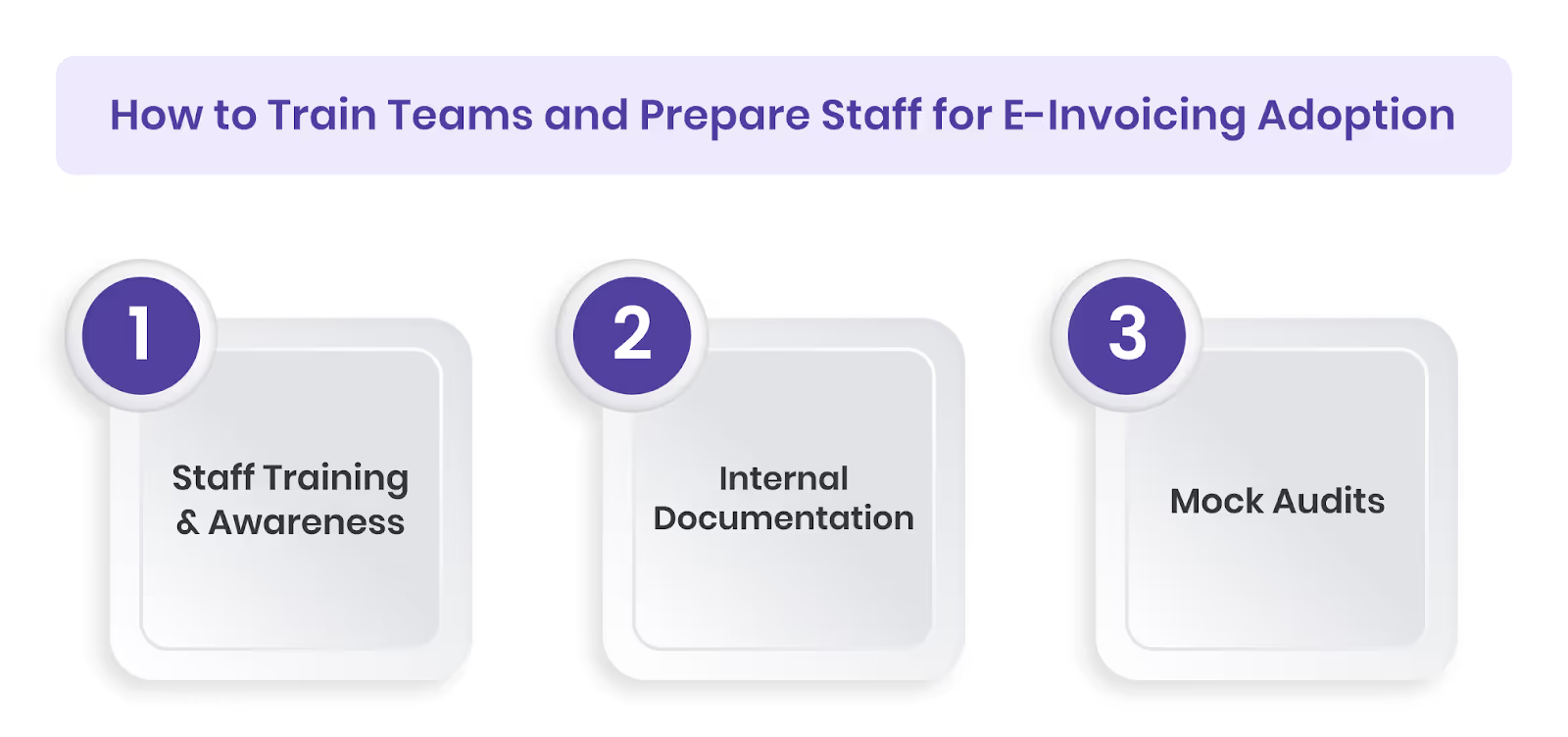
1. Staff Training and Awareness
- Finance teams must learn how to generate, approve, and track e-invoices within the new system.
- Procurement teams need clarity on how supplier invoices will be received and validated.
- IT teams should understand how to monitor integration workflows and troubleshoot transmission errors.
- Executives should provide sponsorship to prioritize the project and allocate necessary resources.
2. Internal Documentation
Creating step-by-step manuals or adopting ASP-provided documentation ensures that employees have reference material when issues arise. Companies should also create internal escalation paths for handling invoice rejections or system downtime.
3. Mock Audits
Running internal mock audits can help test whether all compliance requirements are being met. For example:
- Can invoices be retrieved quickly for the last 5 years?
- Are VAT breakdowns clear and consistent?
- Do teams know how to handle exceptions like cancellations or credit notes?
Sample Readiness Checklist
Here’s a quick list enterprises can adapt for internal training:
✅ Have you updated your invoice template to include all required PINT AE fields?
✅ Has your ERP been configured to capture TRNs and VAT codes correctly?
✅ Has your ASP integration been tested for invoice creation, transmission, and acknowledgments?
✅ Do finance staff know how to handle rejected invoices?
✅ Are archiving policies in place for 5–10 years, depending on the transaction type?
✅ Has a pilot run been completed with a sample set of invoices?
Tip: Training and change management should begin before technical go-live. Early familiarization reduces resistance and prevents last-minute mistakes.
Key Takeaways: UAE E-Invoicing Implementation Pathways
For SMEs and enterprises alike, successful e-invoicing adoption depends on starting early and choosing the right pathway. Here’s what to remember:
- Start in 2025, not 2026: Large enterprises need at least 6–12 months for ERP integration. SMEs should not delay either — cloud solutions can be deployed quickly.
- SME Quick Start: Choose an MoF-accredited ASP with a simple web portal or invoicing add-on. Train one finance staff member to manage compliance.
- Enterprise Project Approach: Treat e-invoicing as a structured IT-finance project with assessment, integration, testing, and phased go-live.
- Vendor Selection Matters: Prioritize ASPs with proven Peppol experience and official MoF accreditation. Always check the MoF accredited provider list.
- ERP Integration is Critical: Ensure SAP, Oracle, or other ERPs are mapped correctly to PINT AE fields. Run pilots in 2025 to iron out issues.
- Change Management: Train finance, procurement, and IT teams. Prepare internal manuals and run mock audits before go-live.
- Compliance is Continuous: Even after implementation, businesses must monitor acknowledgments, handle rejected invoices, and maintain electronic archives for 5–10 years.
UAE e-invoicing is a compliance mandate, but with the right pathway and preparation, it can also drive efficiency and digital transformation.
Resources & Downloadables: Your Implementation Toolkit
To support businesses preparing for the July 2026 UAE e-invoicing mandate, here are practical resources that can guide SMEs and enterprises through the implementation journey:
- MoF & FTA Official Sources:
- MoF E-Invoicing Portal – official regulations, accreditation updates, FAQs.
- FTA VAT Guidance – VAT law, record-keeping, and compliance details.
- PINT AE documentation – The official Peppol documentation for UAE e-invoicing, including PINT AE Billing 3.0 and Self-Billing standards.
Tip: Bookmark the MoF portal and Peppol documentation hub. Regulations and technical requirements are updated regularly, and staying informed will prevent last-minute compliance gaps.
How Alaan Helps Businesses Implement E-Invoicing
Whether you’re a fast-growing SME or a large enterprise, implementing e-invoicing is about more than just compliance — it’s about ensuring efficiency, accuracy, and readiness for future digital regulations. Alaan’s platform is designed to support both ends of the spectrum.
For SMEs
- Plug-and-play workflows with accredited service providers.
- Simple cloud-based portals to digitize invoices without IT complexity.
- Automated compliance checks to reduce risk of rejections.
- Built-in spend management features to streamline financial operations.
For Enterprises
- API integrations that connect directly with SAP, Oracle, or Microsoft Dynamics.
- Real-time monitoring dashboards to track invoice status and acknowledgments.
- Automated archiving and audit-ready reporting for 5–10 years.
- Role-based access controls and audit logs to strengthen governance.
[cta-3]
With Alaan, compliance with the UAE’s e-invoicing mandate becomes a seamless extension of financial workflows — not a standalone project.
Conclusion
The UAE’s e-invoicing rollout is entering its final stretch, with July 2026 enforcement now less than a year away. For SMEs, simple ASP-led solutions can ensure readiness with minimal disruption. For enterprises, ERP integration projects must begin in 2025 to allow enough lead time for testing and phased adoption.
Companies that act now will not only avoid penalties but also unlock operational efficiencies, improve invoice accuracy, and build stronger compliance foundations for the future.
At Alaan, we believe compliance should enable transformation, not slow it down. Our platform helps finance teams implement e-invoicing pathways confidently while driving broader digital finance efficiency.
Book a demo with Alaan to see how we can support your business on its journey to UAE e-invoicing compliance.
Frequently Asked Questions (FAQs) on UAE E-Invoicing Implementation
1. When should businesses start preparing for UAE e-invoicing?
Enterprises should begin preparation in 2025, as ERP integration and testing can take 6–12 months. SMEs should also act early, even though they can adopt plug-and-play ASP solutions faster. Waiting until 2026 risks rushed, error-prone implementations.
2. Do SMEs and large enterprises follow the same pathway?
No. SMEs typically adopt simple cloud-based ASP solutions that require little IT setup. Enterprises need structured ERP integrations with ASPs, requiring project planning, testing, and phased rollout.
3. Who are Accredited Service Providers (ASPs)?
ASPs are providers authorized by the UAE Ministry of Finance (MoF) to transmit e-invoices via the Peppol network. Only ASPs on the official register can legally connect businesses to the Federal Tax Authority (FTA).
4. Can businesses upload invoices directly to the FTA portal?
No. Invoices must flow through the Peppol 5-corner model using accredited ASPs. Direct uploads by taxpayers to an FTA portal are not part of the UAE model.
5. What ERP systems are supported?
Most global ASPs support integrations with SAP, Oracle, Microsoft Dynamics, and other ERPs. For SMEs, ASPs often provide simple web portals or connectors for accounting software like Zoho or QuickBooks.
6. How long must e-invoices be stored?
Invoices must be archived electronically for at least 5 years, with longer retention (up to 10–15 years) required for capital assets and certain real estate transactions.


.avif)


